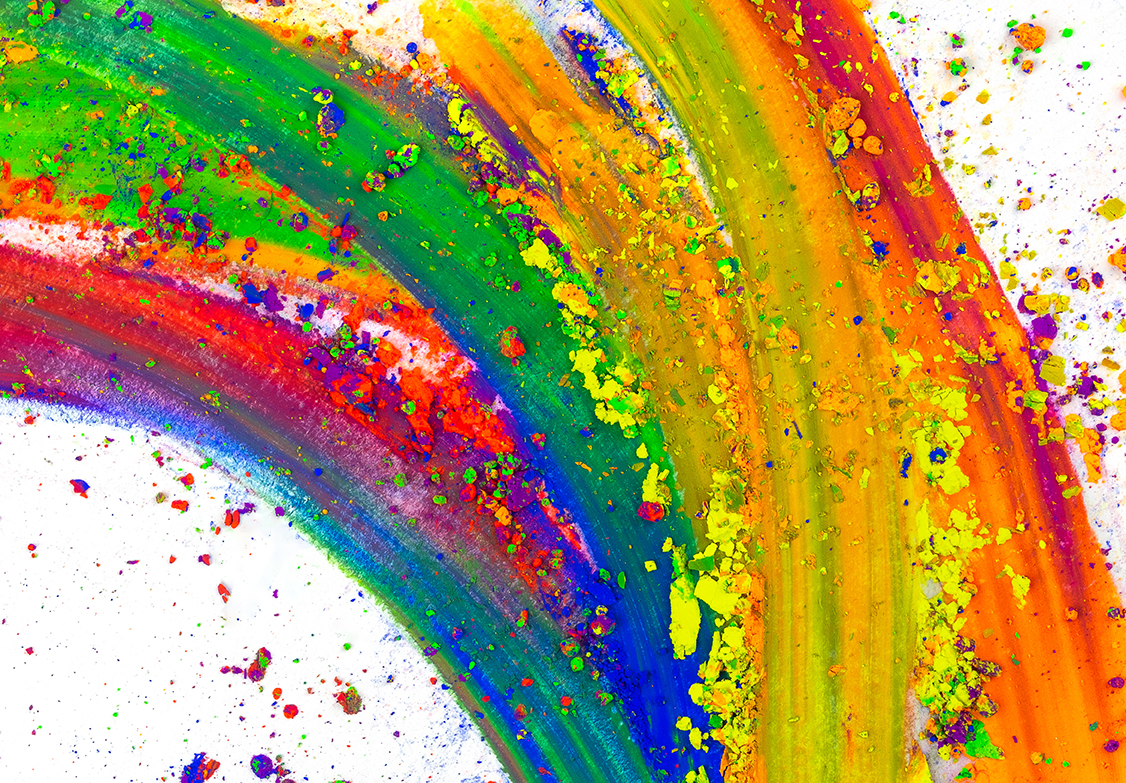Colours Range Explained

Zenicolor: Zenicolor is a branded colouring system specifically for Melt and Pour soaps. It's innovative properties mean that it does not bleed between layers, maintains complete transparency in clear soaps, is clean to use and you are able to mix virtually any colour using the 5 colours provided (4 colours in Professional range) with the help of the Zenicolor App.
Liquid Dyes: Water-soluble dyes in dilute liquid form. Simple to use in melt and pour soap. Maintain clarity. Can be mixed to achieve a wide selection of colours and shades. Dyes can bleed into adjacent layers.
Water Soluble Powdered and Granular Dyes: Water soluble powdered dyes for use in many cosmetic applications. Excellent to maintain clarity in transparent soaps. Not all suitable for CP soap. Dyes can bleed into adjacent layers.
Dyes (as opposed to pigments) have small particle size and lend their colour to products by solubising. The benefits of dyes is that they maintain complete transparency which is ideal in clear liquid bases or in melt and pour soaps. Some dyes are less tollerent of extreme pH environments than others which means not all are suitable for use in alkali products such as CP soaps or in acid environments such as in bath bombs where citric acid is used.
When further dilute in water, dyes often appear a different colour from that of their concentrated liquid or powdered forms. Dyes should always be used sparingly and never added to any dry toiletries in their powdered form.
Dyes will 'bleed' in melt and pour soaps.
Many of our powdered dyes are now being manufactured in fine granular form which helps reduce airborn dust when handling.
Water Dispersible Pigments: Non-bleed pigments suitable for many cosmetic and toiletry applications. They are versions of those usually only soluble in either oils or alcohol (solvent) but combined with a surfactant to render them dispersible in water, making them suitable for colouring aqueous products and in moderate quantity will maintain transparency in clear bases. Suitable for CP soaps.
Natural Dyes: Colours (dyes) derived from natural substances suitable for inclusion in many soaps and toiletries. Many are not alkali-tolerant so may not suit cold process soaps. Dyes can bleed into adjacent layers. Micas, Poly-Glitters and Jewels: Micas, Poly-Glitters and Jewels are widely used in make up products. Most mica pigments are also stable in CP soaps.
Natural Dyes can come in either powdered, granullar or liquid form. When dilute or further diluted in water, dyes often appear a different colour from that of their concentrated liquid or powdered/granular form. Dyes should always be used sparingly and never added to any dry toiletries in their powdered/granular form.
Some dyes are less tolerant of extreme pH environments than others which means not all are suitable for use in alkali products such as CP soaps or in acid environments such as in bath bombs where citric acid is used.
Dyes will 'bleed' in melt and pour soaps.
Bio Glitter®: Bio-glitter® is an environmentally friendly alternative to traditional plastic-based glitter. Developed to help tackle the part glitter plays in microplastic pollution. Bio-glitter® can be widely used in most cosmetic products. They are made on a cellulose base which is completely biodegradable and as such have huge environmental advantage over standard cosmetic grade poly-glitters.
Developed to help tackle the part glitter plays in microplastic pollution, Bio-glitter® uses plant material as its basis rather than polyester and will naturally degrade into harmless substances in the environment. Currently this cellulose base cannot tolerate solvent environments so they are not suitable for nail polishes, but they are perfectly fine for most other cosmetic applications as well as wider glitter applications. Microfine Glitters (150 microns or 006 Hex and under) are approved for use in eye make-up. Also approved for many lip products in the EU, although advise testing to ensure suitability.
Glitters may either want to float or sink out of suspension in certain products so a 'suspension' base may be required for certain types of products when adding glitters.
We now have two products in available from the Bio-glitter® range; the first product, Cosmetic Bio-glitter® Sparkle is >90% plastic free and the new Cosmetic Bio-glitter® Pure, is 100% plastic free. Both ranges are naturally biodegradable and offer their own special effect appearance and specific properties.
Ecosparks: Ecosparks are a glitter-like product made from Mica, a naturally occurring substance. Because they are Plastic-Free they are able to meet the requirements of the UK ban on micro plastics in rinse-off products.
Coated Micas: Coloured Coated Micas are fine pigment-coated mica powders which are further coated to enable them to disperse in water rather than float on the surface which makes them particularly useful in bath bombs or where a mica might otherwise be introduced to bath water as it avoids much of the problem of the mica being attracted to the bath surface which can cause unpleasant discolouration.
Like conventional mica they can also be widely used in many cosmetic applications. They are almost all very alkali tolerant making them ideal for use in CP soaps as well as in mineral make up. They add bright colour and irridescence to many cosmetic products, although their large particle size means they are not always suitable in many liquid bases or melt and pour soaps as they sink-out of suspension.
Specially coated mica pigments rendering them ideal for use in products such as Bath Bombs where they give rich, deep colour but will not cling to surfaces or to the skin.
Solvent Dyes: Powdered dyes suitable for colouring solvents and volatile oils including fragrance oils, essential oils and their diluents, which might include Denatured Ethanol (alcohol), Dowanol, IPM or DPG etc.. Ideal for use in Room Fragrance products such as reed diffusers.
Mineral and Organic Pigments: Pigments differ from dyes in that they add colour to a substance either by suspension or by 'coating' the structure of the substance. They will opacify a transparent soap base. Pigments will NOT bleed. Suitable for CP Soap. Not usually suitable for liquid products.
Almost without exception, Mineral and Organic pigments have high tolerance to alkali or acid conditions (see individual descriptions for exceptions) and the colour they appear to be in powder form is the same colour they lend to the products they are added to.
Mineral pigments, especially have large particle size and add colour by dispersing rather than solubising. Generally speaking Mineral pigments are ideal for colouring CP soap, dry toiletries such as bath bombs and many forms of make-up. They are less suitable in liquid products as their large particle size means they sink-out of suspension and they also detract from clarity.
Organic pigments in their powdered form are insoluble in water, so are more limited in their use. They disperse in oils or some forms of solvents and add colour by 'coating' the molecules of the products they are added to, so they should NOT be used in dry toiletries such as bath bombs, nor should they be used in products applied directly to the skin unless used very sparingly, as they can cause staining. Organic pigments are very alkali tolerant and can be used successfully in CP soaps. We also have liquid dispersions of these organic pigments shown in a separate section of our catalog.
Important: The term Organic in this context is only to distinguish from Mineral. It does NOT refer to pigments being certified organic by any organisation such as COSMOS.





